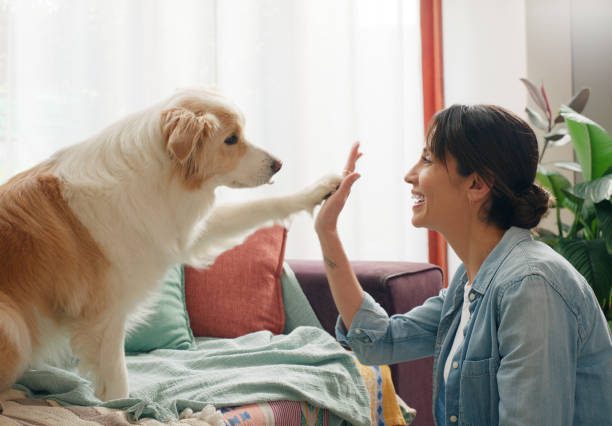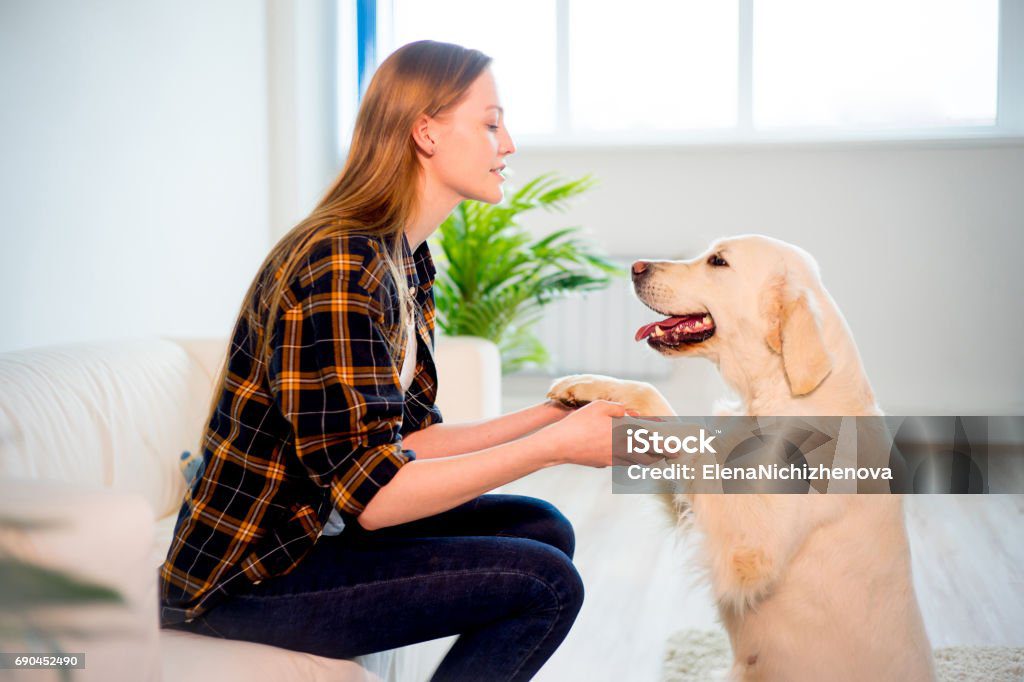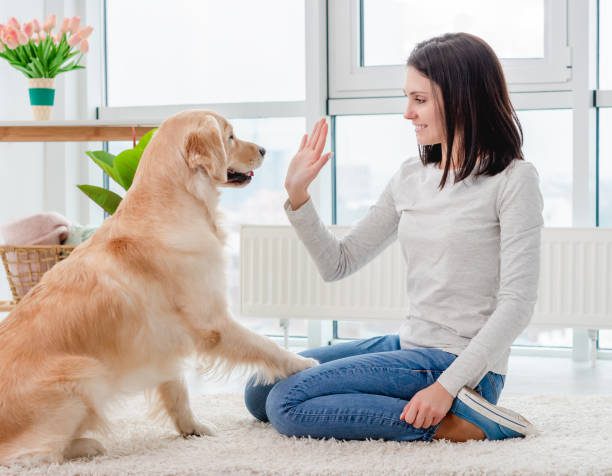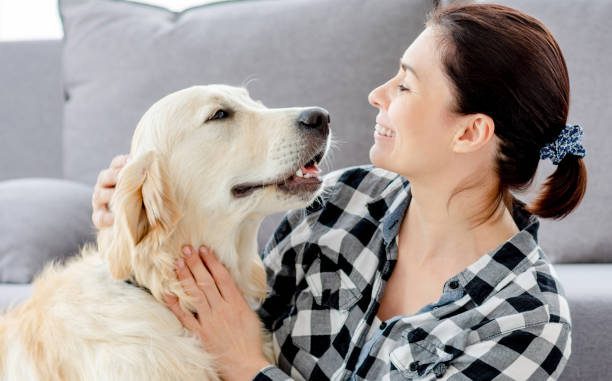Is your dog content? Even though our furry friends are unable to express their emotions verbally, they have a myriad of ways to do so, including wagging tails, playful zoomies, and those endearing puppy eyes. However, as devoted pet owners, it’s normal to question, is my dog really as happy as they appear to be?
Deciphering your dog’s tail wags is only one aspect of determining their level of happiness, but it’s not the only one. It’s about identifying their distinct cues, which range from calm body language to enthusiastic barks and even the odd cheeky sock theft. We’ll dispel some common misconceptions, go over the telltale signs of a contented puppy, and assist you in making sure your four-legged friend is leading the best possible life. Let’s get started. Here are eight tips that we know our dog is happy.

The Secret Language Of Happy Dogs: What Every Pet Owner Should Know
As dog owners, we all want the best for our furry friends. However, since dogs are unable to express their emotions verbally, we must decipher their body language and behavior. The good news? A contented dog makes lots of obvious (and cute) cues.
Your dog’s daily routine, energy level, and appetite reflect their happiness, from excited tail wags to contented sunbeam naps. But while some contentment indicators are hard to spot, others are subtle. So, how can you be sure your pup is truly happy? The main indicators of a happy dog will be broken down in this guide, along with the meanings of various behaviors and how to recognize any possible warning signs that might point to stress or discomfort. By the end, you’ll know more about your dog’s feelings and how to keep them happy for years to come.
Understanding Canine Happiness
Dogs’ wagging tails, silly antics, and unwavering love fill our lives with endless happiness. As pet owners, however, we frequently question, is my dog really happy? Dogs communicate through body language, behavior, and everyday routines because they are unable to verbally express their emotions like humans can. The secret to making sure your pet feels secure, cherished, and happy is to learn to “speak dog.”

What Does a Happy Dog Look Like?
Although belly rubs and treats are undoubtedly helpful, they are not the only things that make a dog happy. A contented dog demonstrates a blend of mental, emotional, and physical health. Among the universal indicators are Loose muscles, a softly wagging tail, and a slightly open mouth are signs of relaxed body posture. Playfulness can include playing games, playing zoomies, or bringing you their favorite toy. Healthy appetite,, which excited for meals but not obsessive or disinterested
Making gentle eye contact, licking your hands, or leaning against you are examples of affectionate behavior. Curiosity and confidence: Investigating their surroundings without fear or anxiety.
Why Your Dog’s Happiness Matters
A contented dog is more than just a fun friend; it’s a healthy, emotionally stable family member whose welfare affects your whole home. Stronger ties between you and your dog, a happier atmosphere in your house, and even unexpected advantages for your own physical and emotional well-being are all signs that your dog is happy. However, why does a dog’s happiness extend beyond playtime and treats? Let’s examine the more profound significance of your dog’s mental health. A contented dog is a healthier dog.
Dogs can suffer from stress, anxiety, and even depression, just like people do. These conditions can impair a dog’s immune system and cause long-term health problems. A happy, active dog is more likely to keep your weight in check with regular exercise and a healthy appetite. Increased immunity (less frequent veterinary visits). Live a longer, more active life (with fewer illnesses brought on by stress).

Emotional Intelligence In Dogs
Dogs are often thought of as cheerful companions, but their emotional lives are much more complicated than play bows and tail wags. Dogs are exceptionally emotionally intelligent, meaning they can recognize, understand, and react to both our emotions and their own. Their natural sensitivity aids in social interaction, human bonding, and even therapeutic support. However, how can we better understand emotional intelligence in dogs, and what does it look like?
Canine Emotional Intelligence: What Is It?
Dogs with emotional intelligence (EI) can:
Identify human and animal emotions (by scent, body language, and tone)
Control their feelings (relaxing when anxious or agitated)
Show empathy for others by soothing a sobbing owner or gently playing with a puppy. Adjust to social situations by observing people’s and dogs’ cues
Body Language That Reveals Joy
Dogs don’t have to express their happiness to us; when they’re content, their whole body radiates happiness. Every tiny movement, from the tip of their wagging tail to their laid-back, wiggly posture, reveals something about their emotional state. Gaining an understanding of these cues improves our relationship with our dogs and helps us better understand them. Your dog’s body language conveys unadulterated joy in the following way. The Tail Is Everything: The most well-known indication of a contented dog is a wagging tail, but not all wags are created equal! I’m thrilled!” is expressed with broad, loose wags that resemble windshield wipers. Wiggly, full-body wagging (with their hips swaying as well), exuberant joy. I missed you!” is expressed with quick, brief wags.
Note: True joy is relaxed and unrestrained; a stiff, high tail can indicate tension or alertness.
Behavioral Signs Of A Happy Dog
A happy dog does more than simply wag its tail; it demonstrates comfort, self-assurance, and contentment in its day-to-day actions. There are common behaviors that indicate genuine canine happiness, even though each dog has a distinct personality. You can make sure your pet is doing well both physically and emotionally by identifying these symptoms. One of the main behavioral indicators of a happy dog is that it greets you enthusiastically when you get home, even if it’s just from a different room.
Exuberance that is wiggly and full-bodied (tail wagging, ears relaxed, possibly even a happy bark).brings you a favorite object or toy as a way of saying, “I’m so happy you’re back!”
Note: Even though some dogs are more reserved, they can still express joy by softly making eye contact or giving a gentle tail thump.

How You Can Promote Your Dog’s Happiness
A contented dog translates into a happier life for you both. Even though some dogs appear to be happy by nature, your care, surroundings, and emotional support all affect how well they do. The good news? There are simple, everyday ways to boost your dog’s happiness, no expensive toys or complicated routines required.
Here’s how to design a life that makes your dog happy. Prioritize Mental & Physical Exercise
A bored dog is not happy. Keep their bodies and minds active by:
Every day walks (let them sniff—it’s like social media scrolling for dogs!)
Interactive toys, such as treat-dispensing balls and puzzle feeders
Training games (for mental stimulation, practice old tricks, or teach new ones)
Playdates or trips to the dog park (if your dog is gregarious). Create a Solid Connection Using Constructive Engagement
Dogs love to interact with people. Spending quality time together, even if it’s just sitting close by while working, can help to strengthen your relationship. Applying positive reinforcement, which includes compliments, gifts, and love for good behavior
Acquiring their love language (some dogs prefer play, while others love cuddles). Establish a Comfortable and Safe Environment
A contented dog feels safe in their own space. Provide them with a comfortable bed (in a peaceful location if they require solitude). Fresh water and wholesome meals (regularly). A consistent schedule (dogs enjoy knowing what to expect).Respect Their Personality
Dogs differ from one another; what makes one happy may cause stress for another. Be mindful of the following: Social preferences (some people prefer quiet, others love crowds).Energy levels (a high-energy herding breed versus a lazy lapdog)
Tolerance for touch (not all dogs desire hugs).
Maintain Their Health
Happiness is directly impacted by physical health. Keep an eye on: Routine veterinary examinations (preventative care identifies problems early)
Dental health (pain = grumpy pup = bad teeth)
Healthy eating (good food maintains steady energy levels).Create Typical Moments. Big adventures aren’t the only thing that brings special happiness. Even the little things count.
Allow them to observe the world (a window perch for local “TV”).
Try new textures (crunchy vegetables, frozen broth cubes). Hide treats throughout the house (a fun scavenger hunt).

Conclusion
Being present, perceptive, and flexible is more important for fostering your dog’s happiness than striving for perfection. You will receive a lifetime of love, laughter, and loyalty when you put their well-being first.
